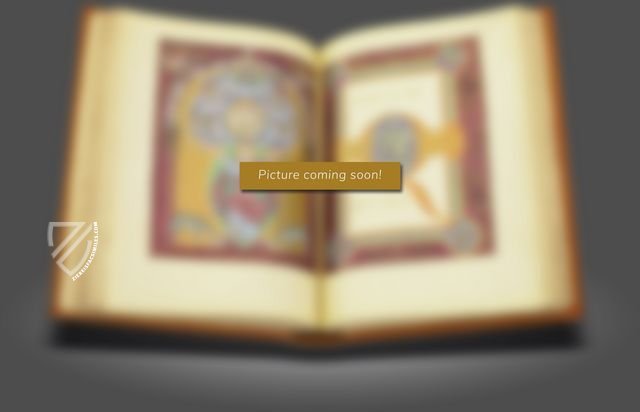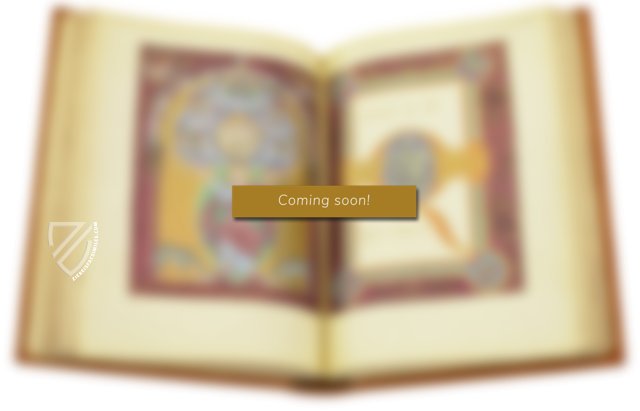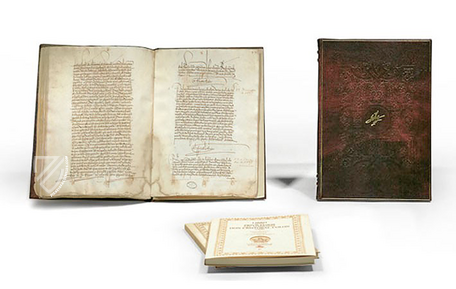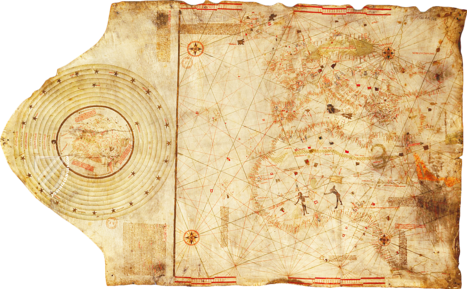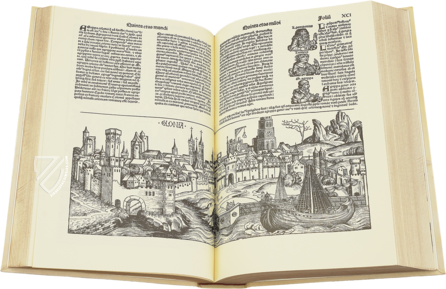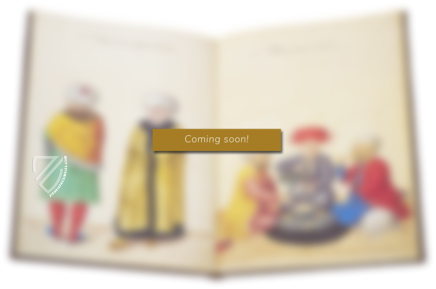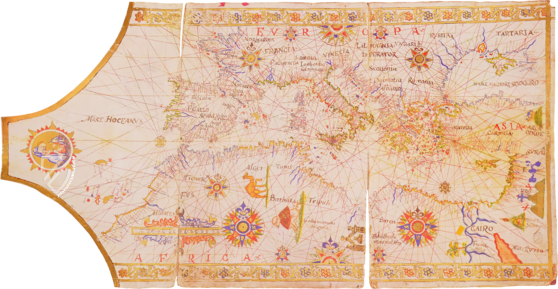Documents from Ferdinand II's Secret Archives
(under 1,000€)
These two documents are historic witnesses to two of the most important and controversial episodes in the history of Spain: the expulsion of the Jews and the exploration and colonization of the Americas. Both the Alhambra Decree, also known in Hebrew as the “Edict of Expulsion”, and the “Capitulations of Santa Fe” were signed in 1492 by the Catholic Monarchs Isabella I of Castile and Ferdinand II of Aragon. Complete with their royal seals, both documents are presented in their original state as part of a single set. They thus offer first-hand testimony in the truest sense of the word, warts and all, to the two events of that year in which Spain began to transform itself into Europe's superpower.
Documents from Ferdinand II's Secret Archives
1492 was a monumental year for the world and for Spain in particular because that year saw the beginning of its transformation into the first colonial superpower controlling territory across the entire globe. Spain was united as never before since the 1469 wedding the joined Queen Isabella I of Castile (1451-1504) with King Ferdinand II of Aragon (1452-1516). Two documents, among the most important for the history of Spain, are presented here: the Alhambra Decree, also known as the Edict of Expulsion, and the Capitulations of Santa Fe. These historic and controversial documents are priceless artifacts providing precious insights into the origins of Early Modern Spain that have been on UNESCO’s Memory of the World Register since 2009. They are presented in their original form with their royal seals just as they are preserved in the General Archive of the Crown of Aragon in Barcelona, which was founded in 1318.
Expelling the Jews
Anti-Semitism had been on the rise in Europe since the 14th century, when the Black Death ravaged Europe and many sought to place blame on the Jews. Spain had previously enjoyed a polyglot culture that benefitted from having Jewish and Muslim scholars working alongside their Christian counterparts, but the country was gripped by fervent Catholicism as the Reconquista reached its final violent conclusion. Now that the final stronghold of Grenada had fallen and the Muslim Moors were gone, the only “Others” left were the Jews. Written by Juan de Coloma, the Alhambra Decree was signed by Isabella I of Castile and Ferdinand II of Aragon on March 31st, 1492 – less than three months after the fall of Granada – details the expulsion or conversion of all Jews living in their kingdoms. It was the final chapter of centuries of Jewish persecution on the Iberian Peninsula, where they would not return until the 19th century, making it the longest-lasting expulsion of the Jews in European history.
The Issue of Money
In the Late Middle Ages, the importance of feudal obligations was gradually undermined by the increased circulation and use of money. As Europe adopted an increasingly money-based economy, resentment against Jewish money lenders and financiers grew among all levels of society as members of the nobility, who had once found the Jew useful, felt their station being challenged by this industrious and increasingly wealthy group of people. It may not be surprising to learn that although Jews could take their property with them, but not gold and silver. This was a common feature of Jewish expulsions across Europe and their timing was usually associated with some kind of financial crisis. For the sake of their livelihoods and staying in their communities, ca. 200,000 of Spain’s 300,000 Jews chose to convert, although this community of so-called conversos continued to face persecution from the Spanish Inquisition for centuries.
A Royal Contract with Columbus
Only two weeks later, another document laid the foundations for Spanish exploration and colonization in the as-yet undiscovered Americas. Known as the Capitulations of Santa Fe, this series of agreements between Christopher Columbus and the Catholic Monarchs was signed in Santa Fe on April 17th, 1492 and was followed by the famous First Voyage of Columbus that summer and autumn. It outlines all the rights and privileges granted to him should he successfully establish overseas Spanish colonies in what was originally thought to the be “Indies” and would later be used as evidence by his descendants when pressing their claims to their inheritance. The so-called Capitulations were staggering, Columbus was named: Admiral of the Ocean Sea, Viceroy and Governor General over all of the regions he discovered, a 10 % share of the expedition’s revenues and profits, and finally, he would be awarded the title of Don upon his return.
Codicology
- Alternative Titles
- Capitulations of Santa Fe and Alhambra Decree
Capitulations of Santa Fe and Edict of Expulsion of the Jews by the Catholic Monarchs
Capitulaciones de Santa Fe y Edicto de expulsión de los Judíos
Kapitulation von Santa Fe und Alhambra-Edikt - Size / Format
- 2 documents / 43.6 × 30.6 cm
- Origin
- Spain
- Date
- 1492
- Epochs
- Style
- Script
- Secretary
- Content
- Capitulations of Santa Fe; Alhambra Decree / Edict of Expulsion of the Jews by the Catholic Monarchs
- Artist / School
- Juan de Coloma (scribe)
#1 Orígenes de la España Moderna 1492: Annus Mirabilis
(under 1,000€)
- Treatises / Secular Books
- Apocalypses / Beatus
- Astronomy / Astrology
- Bestiaries
- Bibles / Gospels
- Chronicles / History / Law
- Geography / Maps
- Saints' Lives
- Islam / Oriental
- Judaism / Hebrew
- Single Leaf Collections
- Leonardo da Vinci
- Literature / Poetry
- Liturgical Manuscripts
- Medicine / Botany / Alchemy
- Music
- Mythology / Prophecies
- Psalters
- Other Religious Books
- Games / Hunting
- Private Devotion Books
- Other Genres
- Afghanistan
- Armenia
- Austria
- Belgium
- Belize
- Bosnia and Herzegovina
- China
- Colombia
- Costa Rica
- Croatia
- Cyprus
- Czech Republic
- Denmark
- Egypt
- El Salvador
- Ethiopia
- France
- Germany
- Greece
- Guatemala
- Honduras
- Hungary
- India
- Iran
- Iraq
- Israel
- Italy
- Japan
- Jordan
- Kazakhstan
- Kyrgyzstan
- Lebanon
- Liechtenstein
- Luxembourg
- Mexico
- Morocco
- Netherlands
- Palestine
- Panama
- Peru
- Poland
- Portugal
- Romania
- Russia
- Serbia
- Spain
- Sri Lanka
- Sweden
- Switzerland
- Syria
- Tajikistan
- Turkey
- Turkmenistan
- Ukraine
- United Kingdom
- United States
- Uzbekistan
- Vatican City
- A. Oosthoek, van Holkema & Warendorf
- Aboca Museum
- Ajuntament de Valencia
- Akademie Verlag
- Akademische Druck- u. Verlagsanstalt (ADEVA)
- Aldo Ausilio Editore - Bottega d’Erasmo
- Alecto Historical Editions
- Alkuin Verlag
- Almqvist & Wiksell
- Amilcare Pizzi
- Andreas & Andreas Verlagsbuchhandlung
- Archa 90
- Archiv Verlag
- Archivi Edizioni
- Arnold Verlag
- ARS
- Ars Magna
- ArtCodex
- AyN Ediciones
- Azimuth Editions
- Badenia Verlag
- Bärenreiter-Verlag
- Belser Verlag
- Belser Verlag / WK Wertkontor
- Benziger Verlag
- Bernardinum Wydawnictwo
- BiblioGemma
- Biblioteca Apostolica Vaticana (Vaticanstadt, Vaticanstadt)
- Bibliotheca Palatina Faksimile Verlag
- Bibliotheca Rara
- Boydell & Brewer
- Bramante Edizioni
- Bredius Genootschap
- Brepols Publishers
- British Library
- C. Weckesser
- Caixa Catalunya
- Canesi
- CAPSA, Ars Scriptoria
- Caratzas Brothers, Publishers
- Carus Verlag
- Casamassima Libri
- Centrum Cartographie Verlag GmbH
- Chavane Verlag
- Christian Brandstätter Verlag
- Circulo Cientifico
- Club Bibliófilo Versol
- Club du Livre
- CM Editores
- Collegium Graphicum
- Collezione Apocrifa Da Vinci
- Comissão Nacional para as Comemorações dos Descobrimentos Portugueses
- Coron Verlag
- Corvina
- CTHS
- D. S. Brewer
- Damon
- De Agostini/UTET
- De Nederlandsche Boekhandel
- De Schutter
- Deuschle & Stemmle
- Deutscher Verlag für Kunstwissenschaft
- DIAMM
- Droz
- E. Schreiber Graphische Kunstanstalten
- Ediciones Boreal
- Ediciones Grial
- Ediclube
- Edições Inapa
- Edilan
- Editalia
- Edition Deuschle
- Edition Georg Popp
- Edition Leipzig
- Edition Libri Illustri
- Editiones Reales Sitios S. L.
- Éditions de l'Oiseau Lyre
- Editions Medicina Rara
- Editorial Casariego
- Editorial Mintzoa
- Editrice Antenore
- Editrice Velar
- Edizioni Edison
- Egeria, S.L.
- Eikon Editores
- Electa
- Emery Walker Limited
- Enciclopèdia Catalana
- Eos-Verlag
- Ephesus Publishing
- Ernst Battenberg
- Eugrammia Press
- Extraordinary Editions
- Fackelverlag
- Facsimila Art & Edition
- Facsimile Editions Ltd.
- Facsimilia Art & Edition Ebert KG
- Faksimile Verlag
- Feuermann Verlag
- Folger Shakespeare Library
- Franco Cosimo Panini Editore
- Friedrich Wittig Verlag
- Fundación Hullera Vasco-Leonesa
- G. Braziller
- Gabriele Mazzotta Editore
- Gebr. Mann Verlag
- Gesellschaft für graphische Industrie
- Getty Research Institute
- Giovanni Domenico de Rossi
- Giunti Editore
- Graffiti
- Grafica European Center of Fine Arts
- Guido Pressler
- Guillermo Blazquez
- Gustav Kiepenheuer
- H. N. Abrams
- Harrassowitz
- Harvard University Press
- Helikon
- Hendrickson Publishers
- Henning Oppermann
- Herder Verlag
- Hes & De Graaf Publishers
- Hoepli
- Holbein-Verlag
- Houghton Library
- Hugo Schmidt Verlag
- Idion Verlag
- Il Bulino, edizioni d'arte
- ILte
- Imago
- Insel Verlag
- Insel-Verlag Anton Kippenberger
- Instituto de Estudios Altoaragoneses
- Instituto Nacional de Antropología e Historia
- Introligatornia Budnik Jerzy
- Istituto dell'Enciclopedia Italiana - Treccani
- Istituto Ellenico di Studi Bizantini e Postbizantini
- Istituto Geografico De Agostini
- Istituto Poligrafico e Zecca dello Stato
- Italarte Art Establishments
- Jan Thorbecke Verlag
- Johnson Reprint Corporation
- Josef Stocker
- Josef Stocker-Schmid
- Jugoslavija
- Karl W. Hiersemann
- Kasper Straube
- Kaydeda Ediciones
- Kindler Verlag / Coron Verlag
- Kodansha International Ltd.
- Konrad Kölbl Verlag
- Kurt Wolff Verlag
- La Liberia dello Stato
- La Linea Editrice
- La Meta Editore
- Lambert Schneider
- Landeskreditbank Baden-Württemberg
- Leo S. Olschki
- Les Incunables
- Liber Artis
- Library of Congress
- Libreria Musicale Italiana
- Lichtdruck
- Lito Immagine Editore
- Lumen Artis
- Lund Humphries
- M. Moleiro Editor
- Maison des Sciences de l'homme et de la société de Poitiers
- Manuscriptum
- Martinus Nijhoff
- Maruzen-Yushodo Co. Ltd.
- MASA
- Massada Publishers
- McGraw-Hill
- Metropolitan Museum of Art
- Militos
- Millennium Liber
- Müller & Schindler
- Nahar - Stavit
- Nahar and Steimatzky
- National Library of Wales
- Neri Pozza
- Nova Charta
- Oceanum Verlag
- Odeon
- Orbis Mediaevalis
- Orbis Pictus
- Österreichische Staatsdruckerei
- Oxford University Press
- Pageant Books
- Parzellers Buchverlag
- Patrimonio Ediciones
- Pattloch Verlag
- PIAF
- Pieper Verlag
- Plon-Nourrit et cie
- Poligrafiche Bolis
- Presses Universitaires de Strasbourg
- Prestel Verlag
- Princeton University Press
- Prisma Verlag
- Priuli & Verlucca, editori
- Pro Sport Verlag
- Propyläen Verlag
- Pytheas Books
- Quaternio Verlag Luzern
- Reales Sitios
- Recht-Verlag
- Reichert Verlag
- Reichsdruckerei
- Reprint Verlag
- Riehn & Reusch
- Roberto Vattori Editore
- Rosenkilde and Bagger
- Roxburghe Club
- Salerno Editrice
- Saltellus Press
- Sandoz
- Sarajevo Svjetlost
- Schöck ArtPrint Kft.
- Schulsinger Brothers
- Scolar Press
- Scrinium
- Scripta Maneant
- Scriptorium
- Shazar
- Siloé, arte y bibliofilia
- SISMEL - Edizioni del Galluzzo
- Sociedad Mexicana de Antropología
- Société des Bibliophiles & Iconophiles de Belgique
- Soncin Publishing
- Sorli Ediciones
- Stainer and Bell
- Studer
- Styria Verlag
- Sumptibus Pragopress
- Szegedi Tudomànyegyetem
- Taberna Libraria
- Tarshish Books
- Taschen
- Tempus Libri
- Testimonio Compañía Editorial
- Thames and Hudson
- The Clear Vue Publishing Partnership Limited
- The Facsimile Codex
- The Folio Society
- The Marquess of Normanby
- The Richard III and Yorkist History Trust
- Tip.Le.Co
- TouchArt
- TREC Publishing House
- TRI Publishing Co.
- Trident Editore
- Tuliba Collection
- Typis Regiae Officinae Polygraphicae
- Union Verlag Berlin
- Universidad de Granada
- University of California Press
- University of Chicago Press
- Urs Graf
- Vallecchi
- Van Wijnen
- VCH, Acta Humaniora
- VDI Verlag
- VEB Deutscher Verlag für Musik
- Verlag Anton Pustet / Andreas Verlag
- Verlag Bibliophile Drucke Josef Stocker
- Verlag der Münchner Drucke
- Verlag für Regionalgeschichte
- Verlag Styria
- Vicent Garcia Editores
- W. Turnowski Ltd.
- W. Turnowsky
- Waanders Printers
- Wiener Mechitharisten-Congregation (Wien, Österreich)
- Wissenschaftliche Buchgesellschaft
- Wissenschaftliche Verlagsgesellschaft
- Wydawnictwo Dolnoslaskie
- Xuntanza Editorial
- Zakład Narodowy
- Zollikofer AG

